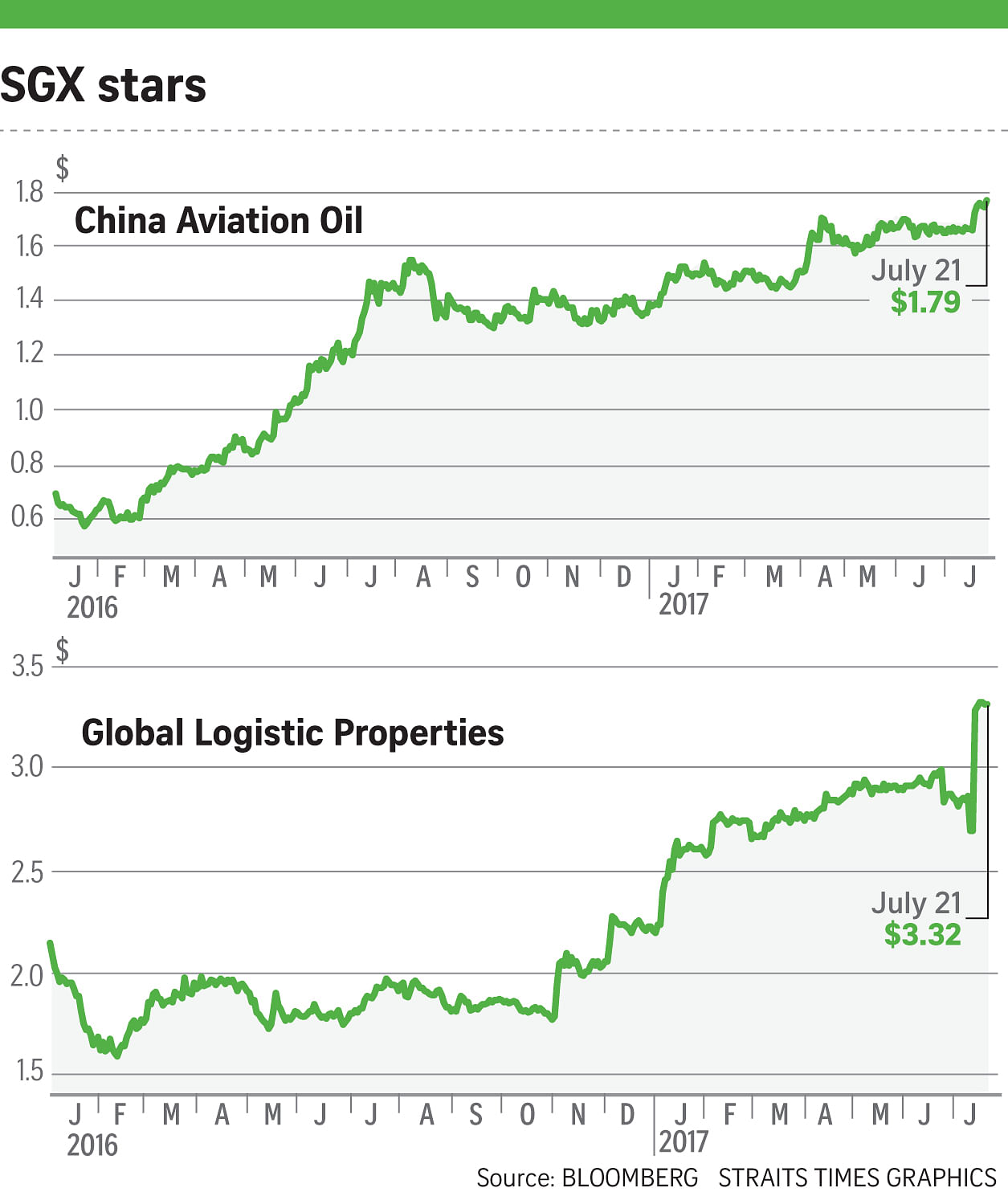More than 750 companies are listed on the Singapore Exchange, yet only a fraction of them are actively traded on a regular basis.
The rest languish in the shadows, and coverage of them by analysts is virtually non-existent. Even if their business is doing well, few investors are aware of them, or bother to take an interest in them as they are thinly traded.
For the savvy investor who does his homework and aims to get outsized returns, this scenario offers plenty of scope for stock picking. There is always the possibility that such undiscovered gems may one day find favour in the market.
Not that this really matters to some of us.
As the saying goes, a rising tide lifts all boats. If we had just taken a wager on, say, an index fund tracking the benchmark Straits Times Index, we would have made a handsome gain of some 15 per cent on our investment so far this year.
While such a return from an index fund is good enough for us to dispense with the need to pick a stock to put our money on, it does deprive us of the joy we get whenever we are able to beat the market by hitting the right buttons with our stock picks.

Global Logistic Properties (GLP) is a case in point. It runs a US$41 billion (S$56 billion) portfolio of warehouses in large countries such as China, Japan, the United States and Brazil. This gives the company a big edge in riding the e-commerce boom, which is taking off across the globe.
Yet, it was priced like a property developer trading at a big discount to its book value, with its share price languishing for much of last year below its 2010 IPO price of $1.96.
That was until the market was rudely awakened to the possibility that it might be worth a lot more after its major shareholder GIC put the company in play late last year by nudging its management to do a "strategic review" to enhance shareholder value - a euphemism which the market interpreted to mean that the stock was underpriced.
Vindication came with the eye-popping offer of $3.38 a share made by a consortium of investors that included GLP chief executive Ming Mei, which valued GLP at a staggering $16 billion.

If ever there was a gem lying in plain sight in our stock market which most people missed by a mile, GLP was it.
But the bigger untold story may be that there are other similar hidden gems waiting to be discovered on the SGX.
In the past, we could have relied on brokerages to flag such possibilities as their teams of research analysts fanned out to search for undervalued companies.
But with the paring of stock commissions, some of these teams have been cut to the point where they merely provide maintenance research on STI component counters and large-capitalised stocks, because that is where their trading desks get the bulk of the income.
Most investors are left pretty much to their own devices in seeking out these undiscovered gems. Still, this does not mean that we are left entirely bereft of useful information on such counters, besides the occasional corporate announcement on the SGX website.
One good information source is the SGX's Kopi-C series, published in this newspaper. It features interviews with bosses and top management of listed firms, offering insights into how they run their business rather than the usual analyst's report focusing on the company's profitability.
So far, more than 50 companies have been featured. They range from biggies such as DBS Group Holdings and Singtel to companies with less than $100 million in market capitalisation, such as investment firm Uni-Asia and restaurant operator Sakae Sushi.
SGX's client development and relationship head, Ms Lynn Gaspar, said the Kopi-C series is part of the bourse operator's efforts to give listed firms more visibility to reach out to investors.
Other initiatives include dialogue sessions organised at least once a month involving two or three listed companies in a particular sector, such as healthcare or Reits, aimed at giving retail investors an opportunity to get to know more about these firms.
To reach out to institutional investors, SGX has teamed up with brokers to organise Corporate Day roadshows to help showcase listed firms to investors, not just here but in other major markets such as Hong Kong and London.
For some firms, hitching on SGX's bandwagon to promote themselves has paid off handsomely.
SGX's executive vice-president and head of equities and fixed income, Mr Chew Sutat, noted that one example was China Aviation Oil (CAO) whose chief executive, Mr Meng Fanqiu, was featured in the Kopi-C's forerunner, the C-Suite series, in May 2015. A subsequent interview on Kopi-C with the company's chief operating officer, Ms Jean Teo, was published in January this year.
CAO had also participated in various SGX-led investor relations (IR) activities such as the Corporate Day roadshow, organised together with CIMB in May 2015, and a trip to meet investors in Hong Kong and Shenzhen late last year.
The efforts by CAO marked a big change of direction for the company, which had studiously kept a low profile for years after being tarred by a corporate scandal in 2004 when its former chief executive Chen Jiulin lost more than US$550 million from trading oil options - almost causing the company to go bankrupt.
CAO's remarkable comeback from its near-death experience went virtually unnoticed during this period, until the company stepped up its IR efforts.
Under the radar, the firm had made the most of its position as the sole licensed importer of jet fuel for China's aviation industry and made headway in globalising its business.
Even the wild swings in crude prices, which caused so much grief to oil majors and companies, and the marine and offshore sector, have not ruffled the company. Earnings last year surged 45 per cent to US$88.91 million as revenues rose 30 per cent to US$11.7 billion.
The result is that as investors' awareness of the comeback kid grows, CAO's share price has tripled to $1.79 in the last two years. Liquidity has also improved, with turnover velocity - tracking how frequently the stock is being traded - jumping from 6 per cent to 51 per cent.
I am sure that there are other gems in the market like CAO. But as investors, we tend to adopt a herd instinct and follow the crowd. We find that the bulk of the funds entering our market focuses on a handful of STI component stocks such as DBS, United Overseas Bank and Keppel Corp.
But if we expand our horizon to include the FTSE ST small and mid-cap indexes, which together have about 100 counters, we will find many stocks which have outperformed the STI, such as Wing Tai Holdings, Venture Corp, Centurion and Lian Beng.
The question is how to identify them. For a start, investors may want to take a closer look at the efforts made by the SGX in getting listed firms to connect with investors. If these firms do not have a good story to offer investors, you can bet that they will not want to be showcased, least of all by the SGX.


